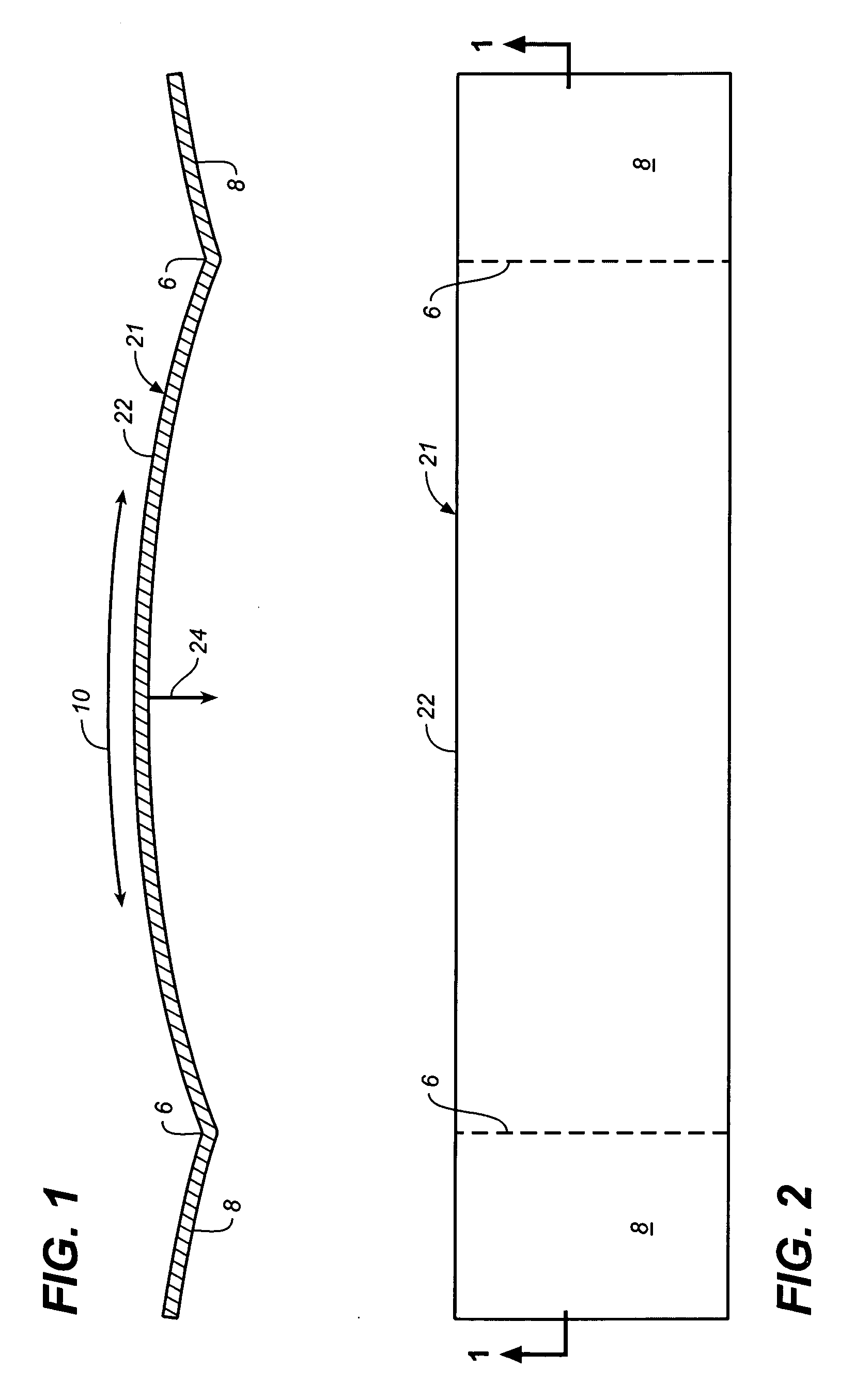Aircraft Wing and Fuselage Structure
a fuselage structure and aircraft technology, applied in the field of structures, can solve the problems of low flying speed and short landing distance achieved by birds, huge cost of high-speed jet aircraft, and few aircra
- Summary
- Abstract
- Description
- Claims
- Application Information
AI Technical Summary
Benefits of technology
Problems solved by technology
Method used
Image
Examples
Embodiment Construction
[0054]The present invention consists of a structure configured to resist bending stresses resulting from design loads; the structure being further configured so that the bending stresses produce force components which resist buckling of thin material portions of the structure stressed in compression.
[0055]The structure is of relatively thin sheet material and curved laterally throughout a substantial portion of its length, to an overall selected depth sufficient to provide the necessary strength to resist maximum design bending stress. The structure also has a longitudinally cambered shape that is initially curved opposite to the bend that occurs when the structure is loaded, and has an initial cambered magnitude sufficient so that positive residual camber remains under maximum design load, the longitudinally cambered configuration curvature and orientation, is selected so that, when loaded, a longitudinal compressive force exists, having force components directed away from the cent...
PUM
 Login to View More
Login to View More Abstract
Description
Claims
Application Information
 Login to View More
Login to View More - R&D
- Intellectual Property
- Life Sciences
- Materials
- Tech Scout
- Unparalleled Data Quality
- Higher Quality Content
- 60% Fewer Hallucinations
Browse by: Latest US Patents, China's latest patents, Technical Efficacy Thesaurus, Application Domain, Technology Topic, Popular Technical Reports.
© 2025 PatSnap. All rights reserved.Legal|Privacy policy|Modern Slavery Act Transparency Statement|Sitemap|About US| Contact US: help@patsnap.com



